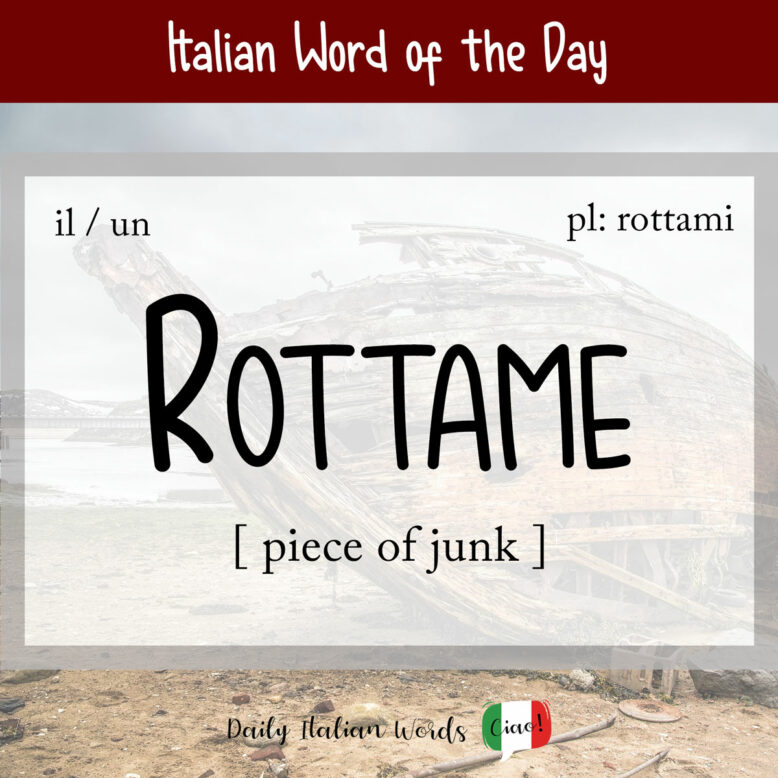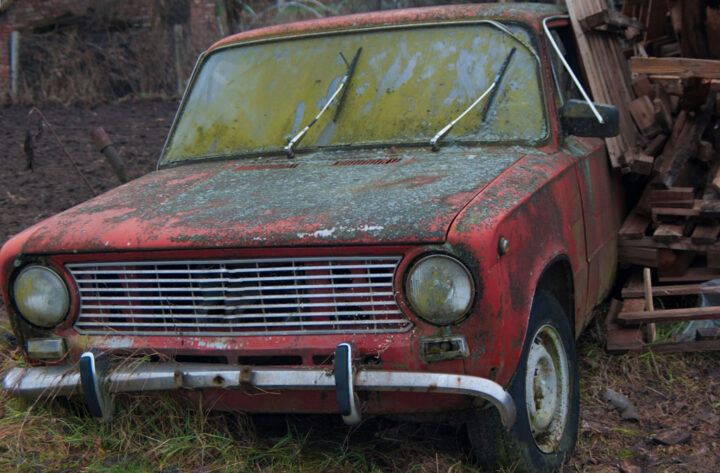Ever since we began feeling the first aches and pains of age, my husband and I have jokingly started calling each other rottame (masculine, plural: rottami).
It derives from rotto, the past participle of the verb rompere (to break), and the suffix -ame whose purpose is to form collective nouns from simple nouns, often with a derogatory connotation.

The first and most literal meaning of rottame doesn’t refer to a person, but to broken or run-down machines such as cars. In this case, the best translation is piece of junk, wreck or heap of metal.
Questa macchina è un rottame oramai: devo cambiarla.
This car is a wreck. It’s time to get a new one.

What’s more, it can specifically indicate fragments of a broken object, or in other words, scrap or junk. When used in this specific sense, it almost always appears in its plural form rottami rather than its singular form (e.g: rottami metallici = scrap metal). Deposito (di) rottami is the term for a junkyard or scrapyard in Italian.
As you might have guessed from our introduction, Italians also use this word in a figurative sense for a person whose physical strength or mental health has failed. Two possible English translations are wreck and mess.
Oggi mi sento proprio un rottame.
Today I feel like an absolute wreck.

From rottame, we get the derivatives:
- rottamare = to scrap, to demolish
- rottamazione = the collection and redistribution of scrap metal
The verb rottamare can also be used in figuratively for a person, often in a playful way. It is also an example of jargon used in politics when a politician is marginalised or sent to an early retirement to make room for someone new.
Hanno rottamato tutti i vecchi membri del partito.
They got rid of all the old members of the party.
Heather Broster is a graduate with honours in linguistics from the University of Western Ontario. She is an aspiring polyglot, proficient in English and Italian, as well as Japanese, Welsh, and French to varying degrees of fluency. Originally from Toronto, Heather has resided in various countries, notably Italy for a period of six years. Her primary focus lies in the fields of language acquisition, education, and bilingual instruction.


